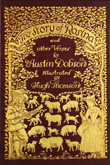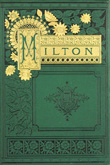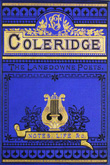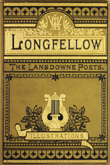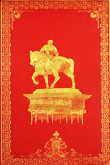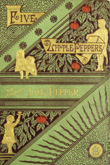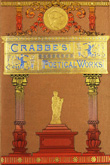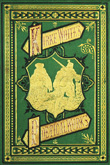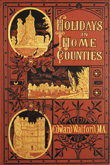The Curator’s Collection
I was first introduced to the beauty of Victorian publisher’s cloth bindings in my early twenties when my Grandmother passed down to me a handful of antique books. One of those family heirlooms was a remarkable 1646 edition of Desid: Erasmi Roterodami Colloqvia familiaria…by the Dutch theologian, Desiderius Erasmus. I was completely enthralled with this but strangely enough, I was equally captivated by the other five books, each dating from the 19th century. Maybe it was the bright cloth covers or the elaborate cover designs or perhaps it was just the liberal use of gold but something about those books really appealed to me.
In fact, I’ve always adored old things – photographs, furniture, ceramics and glassware, anything really. Nothing brightens my day more than a trip to the second-hand store or the local auction house in search of that covetable piece. Mostly, I acquire these items for their aesthetic value but, with books it’s different. The Victorian binding was so much more than just a pretty cover. Prior to this era, books came in paper wrappers and the purchaser had to pay to have them bound in leather; a luxury afforded to the wealthy few. Book paper itself was comprised of cotton and linen fibres and its production was neither cheap nor efficient. Industrialisation of the 1830s and 40s, however, changed all of this. Books could now be “cased-in”; their covers constructed “en masse” and separately from the textblock. Paper, too, was being produced more efficiently thanks to the mechanical pulping of wood. These developments saw the cost of book production plummet and for the first time, most people could actually afford to buy a book.
Interestingly, it’s these advances in paper production and binding methods which fuel my desire to collect the Victorian binding, specifically. It just so happens, that these books aren’t fairing very well. Unlike their 18th and 17th century counterparts, their pages have a high acid content, short cellulose grains and often include lignin, a wood pulp component that promotes acid degradation which usually manifests itself as severe embrittlement and discolouration. Foxing, too, is common to books of this era. These small, light-brown spots on the pages are caused by mould or iron contaminants within the paper itself. Moulds feed on both the paper and other surface matter, including food stains, dead insects and finger marks. Even small details, such as the regular omission of the headband, contribute to the plight of the publisher’s binding. Traditionally these silk stitches (sewn around a piece of cord or leather placed at the top and tail of the spine) were also anchored to the textblock, providing the book with added strength and support when opened. More often than not, the Victorian binding had a faux headband (if it had one at all); that is, a simple piece of machine-stitched cloth glued to the back of the book. Its value was purely decorative; it served no functional purpose whatsoever. It is for these reasons and many more, that I feel compelled to collect and preserve such important historical records.
Now, as someone learning the craft of bookbinding and paper conservation, I have a new-found appreciation for the book’s minor design elements which, together, can produce a very special binding. Whether it’s selecting or dying cloth, hand-sewing page gatherings, cutting boards, backing or “rounding” a book, casing-in, gold-tooling, blocking, stamping or embossing, a great deal of skill and effort goes into binding a book. Although much of this work was mechanised by the end of the 19th century, most bindings from the Victorian era were surprisingly beautiful. They were hand-crafted in many ways; they were often colourful and ornate; and they were complex. They were designed and bound specifically to attract our attention, to encourage us to buy them.
All the more reason to collect them really!

